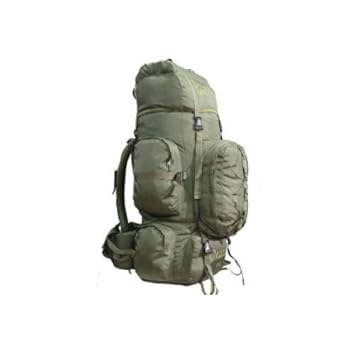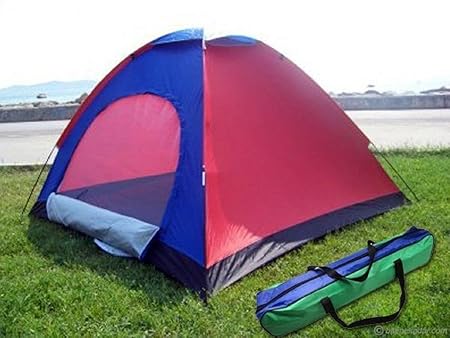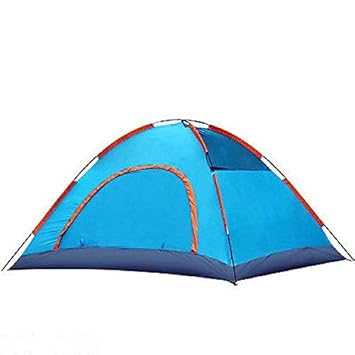Buy Online Rucksacks from BuyBestBrands.in in Association with Amazon India
By Brand : Ess Aar Enterprises
Mrp Price :  3528
3528
 3528
3528Price :  3199
3199
 3199
3199You Save :  329.00 (9%)
329.00 (9%)
 329.00 (9%)
329.00 (9%)
Avg Customer Reviews :
Product Description :
The Pack 08, 75 litres backpack is a part of Ess Aar line of the latest generation of survival backpacks. Its made of extremely durable Cordura Nylon and developed in collaboration with Polish Military forces.
Product Features :
- The main advantage of the Pack 08 backpack is fully adjustable Plus Ergonomic FAS carrier system allows adjusting the backpack while on the move, depending on the angle of descent or ascent. This feature is also helpful when wearing any extra equipment such as a tactical vest or plate carrier.
- Wide and ergonomically shaped shoulder straps and padded waist belt help to distribute weight evenly and relief the pressure. The belt can easily be detached from the rucksack which allows the use of modular weapon belts together with tactical vest. Quick-release Fastex buckles allow the backpack to be quickly dropped on the ground when required. The belt also features set of Grimloc locking D-rings on both sides for attachment of extra accessories.
- The compression straps allow the backpack to be adapted to the size of carried kit and prevent it from shifting inside the bag, which may cause unnecessary noise, discomfort and disturbance to the balance. Front of the backpack, side panels and the lid has a multiple MOLLE strap attachments points, which allow for mounting various MOLLE accessories i.e. backpack bags, first aid kits and pouches. Moreover multiple nylon straps permit the outside fixation of much bigger items that will not fit ins
- Amongst many interesting design solutions of this backpack there are rubberized handles on both sides, which are perfect when crossing fords (rivercrossings) or for lifting the backpack from the ground. What is more the Pack 08 backpack comes with rain cover as a standard accessory, hidden in the compartment on the bottom of the bag fastened with Velcro.
- Capacity: 75 L 1 main compartment with two separate chambers 2 zip lid pockets 2 side pockets with drawstrings 2 detachable side pockets with drawstrings and buckles Quick-detach system FAS Plus Military carrying system Adjustable shoulder straps & back section padded with air mesh Strengthened, enlarged and adjustable waist belt with buckled strap Chest strap with buckle Aluminium frame painted in black Lifted and removable lid with Velcro & buckles Loop panel on the lid Snow collar with drawst
Compare With Similar Items
Price:  2499
2499
 3120
3120
 2499
2499
 3120
3120
You Save:  621.00 (20%)
621.00 (20%)
 621.00 (20%)
621.00 (20%)
Price:  1965
1965
 2306
2306
 1965
1965
 2306
2306
You Save:  341.00 (15%)
341.00 (15%)
 341.00 (15%)
341.00 (15%)
Baggage or luggage consists of bags, cases, and containers which hold a traveller's personal articles while the traveler is in transit. A modern traveller can be expected to have packages containing clothing, toiletries, small possessions, trip necessities. On the return trip, travelers may have souvenirs and gifts. For some people, luggage and the style thereof is representative of the owner's wealth and status. Luggage is constructed to protect the items during travel, either with a hard shell or a durable soft material. Luggage often has internal subdivisions or sections to aid in securing items. Handles are typically provided to facilitate carrying, and some luggage may have wheels and/or telescoping handles or leashes to make moving them easier.
Trunk - A wooden box, generally much larger than other kinds of luggage. Trunks come in smaller sizes as in the case of footlockers and larger ones called steamers. These days trunks are more commonly used for storage than transportation. Items large enough to require a trunk are now usually shipped in transport cases. Some of the better known trunk makers are Louis Vuitton, Goyard, Moynat, M. M. Secor and Leatheroid.
Suitcase - A wheeled or non-wheeled luggage, as well as soft or hard side luggage.
Train case - A smaller, box-like, handled case for personal grooming articles.
Garment bag - A style of luggage that folds over on itself to allow long garments such as suits or dresses to be packed flat to avoid creasing. Garment bags come in both wheeled and non-wheeled models and are usually one of the largest pieces in any set of luggage.
Tote - A small bag, usually worn on the shoulder.
Duffle bag - A barrel-shaped bag, almost exclusively soft side, is well suited to casual travel, with little organization inside.
Carpet bag - Travel luggage traditionally made from carpets.
Packing Cubes - Small rectangular bags of different sizes and different colors created to keep the baggage organized and save space
Gate Check Bags - Bags specially designed to protect frequent gate checking items, such as strollers and car seats.
Luggage features
Locks - locks serve multiple purposes; a deterrent to dishonest airport workers and locks also help keep baggage closed during handling. Since 2003 most locks integrated into luggage use the TSA Lock standard developed by Travel Sentry to allow opening by the US Transportation Security Administration.
Expandable luggage - suitcases that can be unzipped to expand for more packing space.
Wheels
Luggage carriers - light-weight wheeled carts or harnesses on which luggage could be temporarily placed or that can be temporarily attached to luggage - date at least to the 1930s, such as in US patent 2,132,316 "Luggage carrier" by Anne W. Newton (filed 1937, published 1938). These were refined over the following decades, as reflected in patents such as US patent US2509575A by Herbert Ernest Mingo - Device for the handling of trunks, suitcases, and the like.
The first commercially successful rolling suitcase was invented in 1970, when Bernard D. Sadow applied for a patent that was granted in 1972 as United States patent 3,653,474 for "Rolling Luggage".The patent application cited the increase in air travel, and "baggage handling become perhaps the single biggest difficulty encountered by an air passenger", as background of the invention. Sadow's four-wheeled suitcases, pulled using a loose strap, were later surpassed in popularity by suitcases that feature two wheels and are pulled in an upright position using a long handle.
These were invented in 1987 by US pilot Robert Plath, and initially sold to crew members. Plath later commercialized them, after travelers became interested after seeing them in use by crew members, and founded the Travelpro company, which marketing the suitcases under the trademark "Rollaboard". The terms rollaboard and roll-aboard are used generically, however. While initially designed for carry-on use (to navigate through a large terminal), as implied by the analogous name, similar designs are also used for checked baggage.
More recently, four-wheeled luggage with casters has become popular, notably since their use by Samsonite in the 2004 version of their signature Silhouette line. These are otherwise similar in design to two-wheel roll-aboards, with a vertical orientation and a retracting handle, but are designed to be pushed beside or in front of the traveler, rather than pulled behind them. These are often referred to as "spinner" luggage, since they can spin about their vertical axis.
Sadow attributes the late invention of luggage on wheels to a "macho thing" where "men would not accept suitcases with wheels".Others attribute the late invention to "the abundance of luggage porters with carts in the 1960s, the ease of curbside drop-offs at much smaller airports and the heavy iron casters then available."
Hand luggage (carry-on)
Passengers are allowed to carry a limited number of smaller bags with them in the vehicle, these are known as hand luggage (more commonly referred to as carry-on in North America), and contain valuables and items needed during the journey. There is normally storage space provided for hand luggage, either under seating, or in overhead lockers. Trains often have luggage racks at the ends of the carriage near the doors, or above the seats if there are compartments.
There are differing views between North America and Europe in relation to the rules concerning the amount of baggage carried on to aircraft. In North America there is considerable debate as to whether passengers carry too many bags on board and that their weight could be a risk to other passengers and flight safety. US airlines are beginning to introduce weight and size restrictions for carry-on baggage. Whereas in Europe, many airlines, especially low-cost airlines, impose what is commonly known as "the one-bag rule". This is a restriction imposed to stop excessive weight on board and airlines claim that this policy allows them to speed the boarding of the aircraft. Airports in Europe have mounted a campaign with the European Commission in an attempt to overturn these hand luggage regulations. They claim that it is affecting their duty-free and other airport retail sales and is reducing their revenues.
Smart luggage
Smart luggage is baggage that has a built-in or a removable battery within. It often includes features designed to help with travel, including GPS tracking and USB ports to charge electronics. Some bags include a WiFi hotspot and electric wheels for personal transportation.
Several smart luggage companies have shut down as a result of a ban which came into effect in January 2018 on smart luggage with non-removable batteries being carried as check-in luggage on flights.
Baggage claim/reclaim
In airport terminals, a baggage claim or reclaim area is an area where arriving passengers claim checked-in baggage after disembarking from an airline flight. At most airports and many train stations, baggage is delivered to the passenger on a baggage carousel.
Popular Categories on BuyBestBrands.in
Garden & Outdoors : Seeds, Plants, Plant Containers, Gardening Tools, Garden Decor, Pest Control, Barbecue & Outdoor Dining, Solar Power, Fertilizer & soil, Watering Equipment
Amazon Brand : Symbol, Inkast Denim Co, House & Shields, Jam & Honey, Solimo, Presto!, Symactive, Eden & Ivy, Vedaka, Tavasya, Myx










